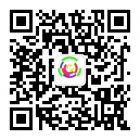
在 Android 开发中,需要使用的控件很多,除了 TextView 、 Button 、 EditText ,还有 RadioGroup 、 CheckBox 、 Spinner 、 ImageView 等一大批控件。这些控件构成了 Android 图形界面开发的基石。 Android 中的控件类都是 android.view.View 类的子类,都在 android . wegdit 包下,除了 TextView 、 Button 之外,还有很多控件类。总结起来, Android 中常用的控件类所示。 控件名称 描 述 TextView 文本显示控件 Bu t ton 按钮控件 Ed i t Text 文本编辑框控件 ImageView 图片显示控件 ImagButton 图片作为按钮的控件 RadioGroup 单选按钮控件 ChekBox 复选框控件 Spiner 下拉列表控件 Se e kBar 拖动条控件 Prog res sBar 进度条控件 Scro l lView 可滚动视图控件 DatePicker 日期显示控件 TimePicker 事件显示控件 Dialog 对话框控件 Toast 信息提示框控件 之前的教程 已经 让大家明白了 如何使用布局管理器,并明白了布局管理器在使用时需要配置很多属性,而这些属性是可以通过相对应的 Java 方法来操作的。同时也简单介绍了如何使用一个控件,那就是直接将控件加入布局管理器中。除了这种方式外,还可以和布局管理器一样通过 Activity 程序来控制。同布局管理器一样,普通控件在使用时也需要配置很多属性,而这些属性也可以通过相对应的 Java 方法来操作。控件的常用属性很多,常用的却不多。同时不同的控件也有各自特有的属性,在使用过程中慢慢就能理解这些属性的意义了。控件中相同又最常用的属性还有几种。 属性名称 操作方法名 描 述 androd: id set I d(int id) 设置控件 id android: focusable setFocusable(boolean focusable) 设置控件是否可以获得焦点 android: backgroud setBackgroudResource(int res) 设置控件背景 android: visibility setVisibilit y (int vis i bility) 设置控件是否可见 下面将通过实例来演示这些属性,在实例中还会涉及一些控件的特别属性。这里的实例将以 TextView 、 Button 、 EditText 、 ImageView 、 RadioGroup 这几个最常用的控件为例,其余的控件会在之后的 教程中 通过实例让 大家 在实例中慢慢理解。 TextView 、 Button 、 EditText 、 ImageView 、 RadioGroup 、 SeekBar 控件的使用 创建一个 Activity 类 MainActivity ,将对应的布局文件 activit y_main 修改 如下 ∶ xml version ="1.0" encoding ="utf-8" < LinearLayout xmlns: android ="http://schemas.android.com/apk/res/android" xmlns: tools ="http://schemas.android.com/tools" android :layout_width ="match_parent" android :layout_height ="match_parent" android :gravity ="center" //让布局管理器内的控件居中排列 android :orientation ="vertical" tools :context =".MainActivity" < TextView android :id ="@+id/textShow" //为控件添加一个id android :layout_width ="wrap_content" android :layout_height ="wrap_content" android :text ="这是文本控件" //为文本控件添加文件 android :textColor ="#FF4040" //为文字添加颜色 android :textSize ="25sp" //为控件文字设置字体大小 android :visibility ="visible" //设置控件为可见,默认为可见 < EditText android :id ="@+id/editShow" android :layout_width ="match_parent" android :layout_height ="60dp" android :enabled ="true" //将编辑框设置为可编辑,默认为可编辑 android :hint ="请输入文字" //设置编辑框提示文字 android :inputType ="number" //设置编辑框输入类型为数字,默认为文本 android :textSize ="30sp" //为输入文字设置大小 < SeekBar //拖拉控件,常在播放器应用中使用 android :id ="@+id/seekBar" android :layout_width ="match_parent" android :layout_height ="35dp" //将控件高度设置为35dp < Button android :id ="@+id/buttonShow" android :layout_width ="wrap_content" android :layout_height ="wrap_content" android :text ="这是一个Button" //为按钮设置显示的文本 android :visibility ="gone" 将控件设置为不可见,同时不会占据空间 < ImageView android :id ="@+id/imageShow" android :layout_width ="wrap_content" android :layout_height ="wrap_content" android :src ="@mipmap/ic_launcher" //为ImageView设置要显示的图片 android :visibility ="invisible" //将控件设置为不可见,会占据空间 < RadioGroup android :id ="@+id/groupButtonShow" android :layout_width ="wrap_content" android :layout_height ="wrap_content" android :orientation ="horizontal" < RadioButton //与单选按钮配套的按钮 android :id ="@+id/basketball" android :layout_width ="wrap_content" android :layout_height ="wrap_content" android :text ="篮球" < RadioButton android :id ="@+id/volleyball" android :layout_width ="wrap_content" android :layout_height ="wrap_content" android :text ="排球" < RadioButton android :id ="@+id/pingpang" android :layout_width ="wrap_content" android :layout_height ="wrap_content" android :text ="乒乓" RadioGroup LinearLayout 运行程序,效果如下图: 这里隐藏了图片和按钮,但是会发现一大块空白区域,这就是在设置 ImageView 时使用的是 invisible ,这种方式还会占据控件。通过测试发现 EditText 也确实是智能输入 , 下面在 Main Activity 类中创建一个 initView () 方法,在 initView () 方法中通过 findViewByld (int id) 法获取相应的控件,最后在 onCreate () 方法中调用 initView () 方法 。 代码如下: 为了方便读者理解,在上述代码中做了很详细的注释。上述代码主要做了 5 件事 ∶ 改变布局文件中的 TextView 文字 ; 设置 EditText 的输入类型为 Text; 将 Button 按钮设置为可见 ; 将 ImageView 按钮设置为可见,并修改图片 ; 将 id 为 " volleyball " 的选项设置为 RadioGroup 的默认选项。运行程序, 效果如下图所示。 通过这样一个实例, 大家 应该能够使用上述几个控件了,想要进一步精通只能靠以后的实践去积累了。在之后的内容中我们还会频繁使用上述几个控件,但会涉及 新的属性、新的方法。 源码下载请关注大鸟科创空间,回复andriod studio进行下载



 标签: 基本控件的使用
标签: 基本控件的使用